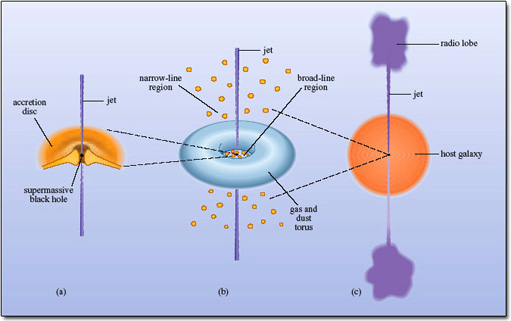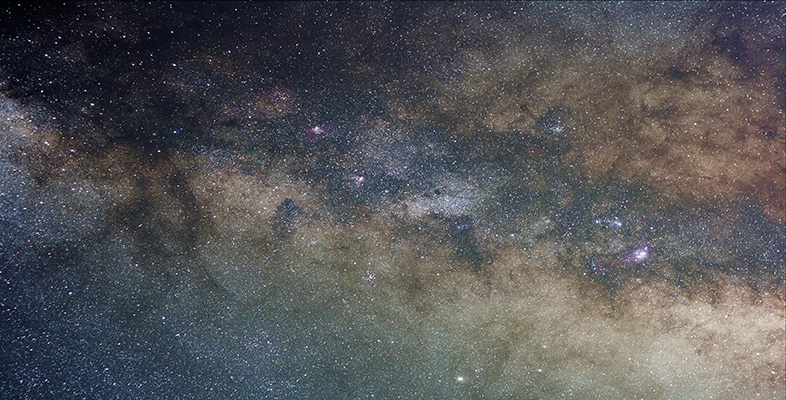5 Models of active galaxies
5.1 Introduction
So far we have seen how the properties of the central engine of the AGN can be accounted for by an accreting supermassive black hole. Though there are many questions still to be resolved, this model does seem to be the best available explanation of what is going on in the heart of an AGN. But of course all AGNs are not the same. We have identified four main classes and in this section we will attempt to construct models that reproduce the distinguishing features of these four classes.
Figure 32 shows the basic model that has been proposed for AGNs. It is a very simple model, and does not account for all AGN phenomena, but it does give you a flavour of the kinds of ideas that astrophysicists are working with. You can see that the central engine (the supermassive black hole and its accretion disc) is surrounded by a cloud of gas and dust in the shape of a torus (a doughnut shape). The gap in the middle of the torus is occupied by clouds forming the broad-line region and both in turn are enveloped by clouds forming the narrow-line region.

We begin by looking at the torus.
